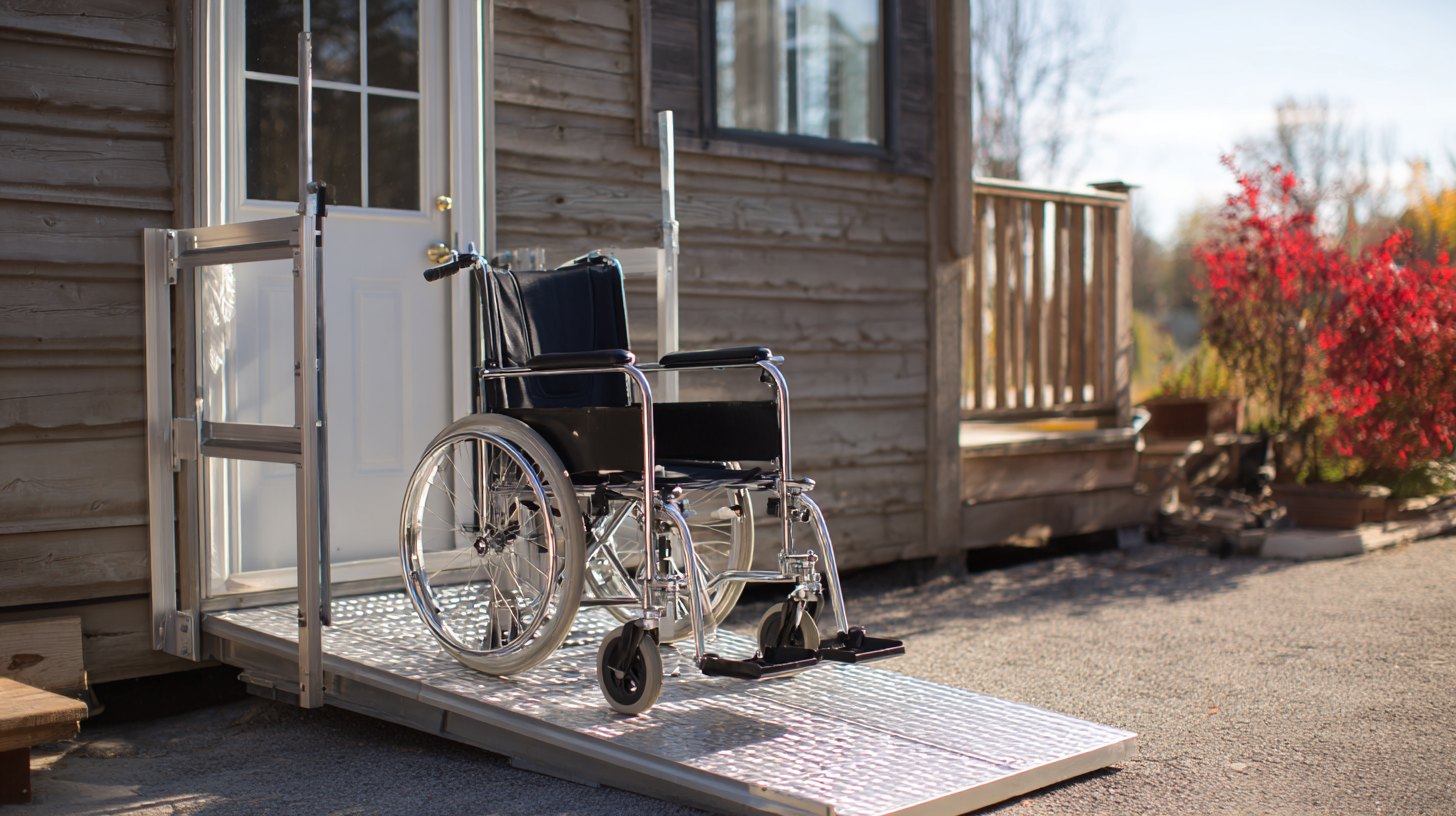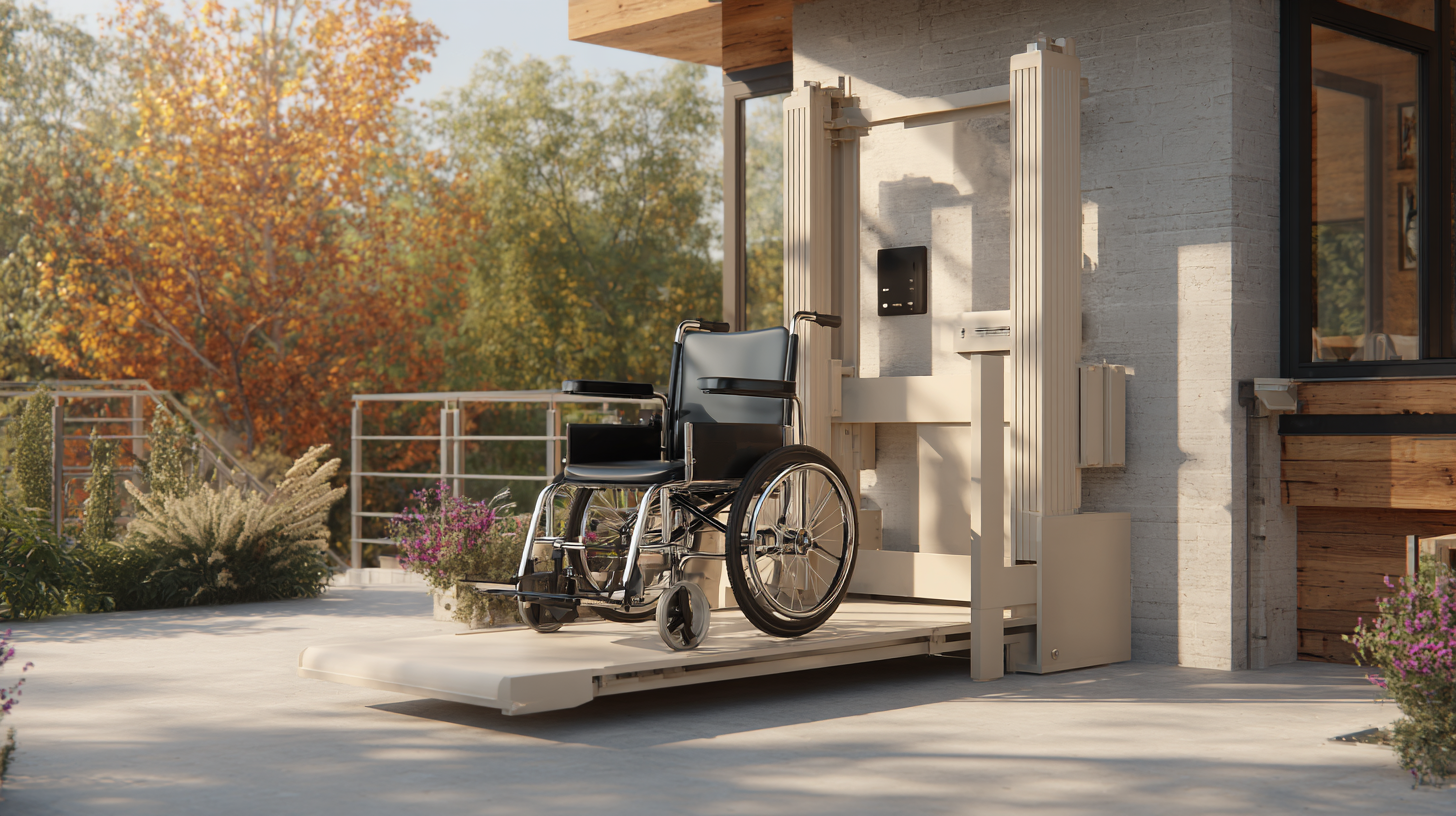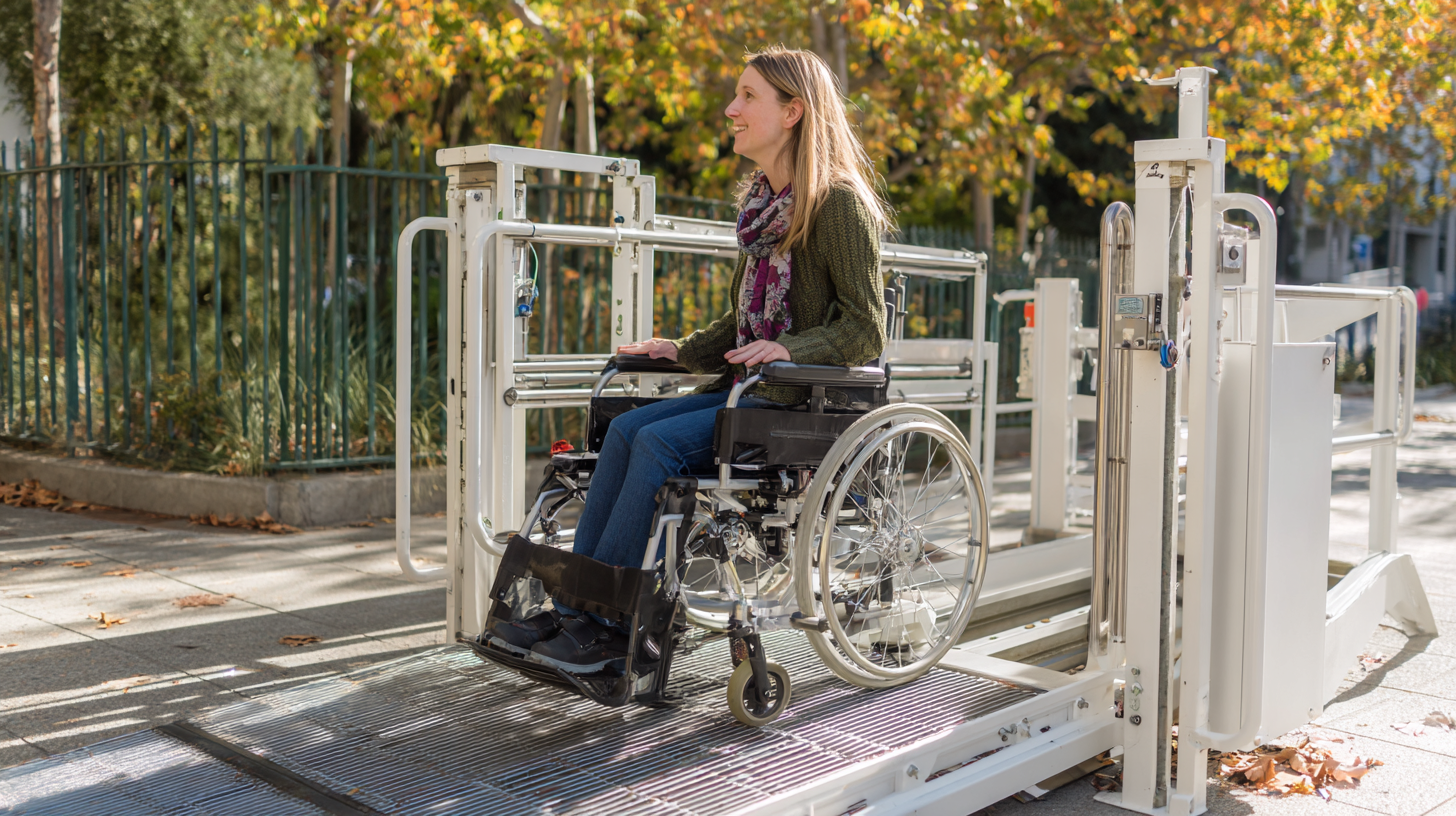How to Enhance Mobility and Accessibility with Outside Wheelchair Lifts
In recent years, the demand for improved mobility and accessibility solutions has gained significant momentum, driven by the increasing awareness of the needs of individuals with disabilities. According to a report by the World Health Organization, over 1 billion people, or roughly 15% of the global population, experience some form of disability, highlighting the urgent need for inclusive infrastructure.
 Outside Wheelchair Lifts have emerged as a vital component in enhancing accessibility, particularly in public spaces, residential homes, and commercial buildings. These lifts not only facilitate independent movement for wheelchair users but also contribute to the overall safety and comfort of those in need. Moreover, research indicates that the implementation of such accessibility features can lead to a 20% increase in foot traffic for businesses, underscoring the importance of investing in Outside Wheelchair Lifts to foster inclusive environments for all.
Outside Wheelchair Lifts have emerged as a vital component in enhancing accessibility, particularly in public spaces, residential homes, and commercial buildings. These lifts not only facilitate independent movement for wheelchair users but also contribute to the overall safety and comfort of those in need. Moreover, research indicates that the implementation of such accessibility features can lead to a 20% increase in foot traffic for businesses, underscoring the importance of investing in Outside Wheelchair Lifts to foster inclusive environments for all.
Understanding the Importance of Wheelchair Lifts for Enhanced Mobility
Wheelchair lifts are crucial in promoting mobility and accessibility for individuals with disabilities. According to the National Institute on Disability, Independent Living, and Rehabilitation Research (NIDILRR), over 61 million adults in the United States live with a disability, many of whom experience mobility limitations. This staggering statistic highlights the pressing need for effective solutions, such as wheelchair lifts, which provide essential access to public and private spaces alike. By removing physical barriers, wheelchair lifts enable individuals to navigate their environments more freely, fostering independence and enhancing quality of life.
Furthermore, a study published in the Journal of Accessibility and Design for All emphasizes that over 90% of users report improved mobility after the installation of wheelchair lifts in their homes and workplaces. These lifts not only serve as practical solutions for transitioning between different levels but also represent a commitment to inclusivity within society. As businesses and public facilities integrate these essential installations, the overall perception of accessibility improves, making it clear that enhancing mobility is not just a matter of convenience but a vital component of social equity.
How to Enhance Mobility and Accessibility with Outside Wheelchair Lifts
| Feature |
Importance |
User Benefits |
| Safety Features |
Prevents accidents and injuries |
Peace of mind for users and caregivers |
| Ease of Use |
Simplifies access to different levels |
Allows greater independence |
| Durability |
Ensures long-term functionality |
Reduced need for repairs and replacements |
| Customization |
Addresses unique user needs |
Improved user satisfaction and comfort |
| Aesthetics |
Enhances the overall look of properties |
Positive impressions for visitors |
Types of Outside Wheelchair Lifts: Choosing the Right One for Your Needs
When considering the best type of outside wheelchair lift to enhance mobility and accessibility, several options are available, each catering to different needs and environments. The most common types include platform lifts, inclined lifts, and portable lifts. According to a report by the National Institute on Disability, Independent Living, and Rehabilitation Research (NIDILRR), nearly 30% of individuals with mobility impairments rely on assistive devices, and selecting the right lift can significantly improve their quality of life.
Platform lifts are designed for vertical movement, making them suitable for homes with stairs or elevated entrances. They come in both hydraulic and screw-driven variations, offering stable and safe transport. On the other hand, inclined lifts are ideal for those with ramps or sloped surfaces, as they follow the gradient of the stairs. A study by the U.S. Access Board highlights that using inclined lifts can reduce the risk of accidents, especially in outdoor settings where weather conditions can impact mobility. Lastly, portable lifts provide flexibility for those who may need to use various locations, ensuring that accessibility is maintained wherever they go. Choosing the right lift depends on individual needs, space requirements, and budget considerations.

Key Features to Look for in an Effective Wheelchair Lift
When considering outside wheelchair lifts, it’s essential to focus on several key features that ensure both mobility and accessibility for users. First and foremost, the lift should have a robust weight capacity to accommodate various wheelchair types and users comfortably. This is crucial as it ensures the safety and durability of the lift under frequent use. Additionally, the design should incorporate anti-slip surfaces and safety rails, which provide added security while the lift is in operation.
Another important aspect to look for is weather resistance. Since the lift will be exposed to the elements, materials that can withstand rain, snow, and sun are imperative for longevity and reliability. Furthermore, a smooth and quiet operation is vital for enhancing user experience. An effective wheelchair lift should feature a reliable motor and easy-to-use controls, allowing individuals to operate it with minimal effort. By prioritizing these features, you can enhance mobility and accessibility significantly, ensuring that users can navigate their environments with ease and confidence.
Key Features of Effective Wheelchair Lifts
Installation Process: Steps to Ensure Safety and Compliance
Installing outside wheelchair lifts is crucial in enhancing mobility and accessibility for individuals with disabilities. To ensure safety and compliance during the installation process, it is essential to adhere to industry regulations and guidelines. According to the Americans with Disabilities Act (ADA), wheelchair lifts must be installed in a manner that provides safe access to buildings and facilities. This includes proper placement, ensuring that the lift is designed to accommodate various wheelchair sizes, and integrating it seamlessly with existing structures.
The installation process typically begins with a thorough assessment of the location where the lift will be placed. This involves measuring the space, evaluating the weight capacity requirements, and ensuring compliance with local building codes. Professional installers often consult the manufacturer’s specifications and guidelines, which generally recommend that lifts be installed by certified personnel to guarantee adherence to safety standards. A survey by the National Association of Home Builders (NAHB) indicates that poorly installed lifts can result in increased accidents and liabilities, emphasizing the importance of professional installation. By following these steps and regulations, we can ensure that outside wheelchair lifts are not only functional but also safe for all users.
Maintenance Tips to Keep Your Wheelchair Lift in Optimal Condition
To ensure your outside wheelchair lift remains in optimal condition,
regular maintenance is essential. Begin by
performing routine inspections to check for any signs of wear or damage. Look for rust, cracks, or loose components,
as these issues can compromise the lift's functionality and safety. Cleaning the lift is also crucial; debris, dirt, and moisture
can build up over time, leading to corrosion and mechanical failure. Utilize a soft cloth and appropriate cleaners to wipe down surfaces,
while avoiding harsh chemicals that could damage parts.

Additionally, it's important to keep the mechanical components of your wheelchair lift
well-lubricated. Regularly grease the joints and moving parts
to ensure smooth operation and reduce the risk of breakdowns. Check the hydraulic system, if applicable,
for leaks or low fluid levels, as these can severely impact performance.
Lastly, consider scheduling professional inspections annually.
A certified technician can identify potential issues before they escalate, ensuring the longevity
and reliability of your wheelchair lift for years to come.